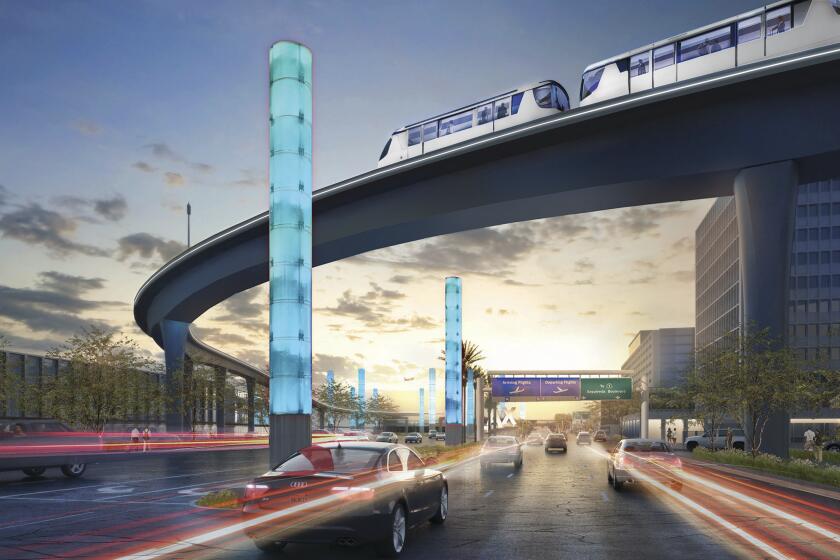Flames will appear above Pacific Palisades again. This time to see what caused January’s deadly fire

- Share via
Flames will appear once again over Pacific Palisades this week as federal investigators conduct a controlled fire test to help determine what caused the January fire that killed a dozen people and destroyed thousands of homes.
Nearly four months after the U.S. Bureau of Alcohol, Tobacco, Firearms and Explosives began investigating the Palisades fire, investigators will set fire to parts of the Temescal Ridge Trail between Skull Rock and Green Peak on Tuesday night.
Officials believe the Palisades fire began around 10:30 a.m. on Jan. 7 as high winds sent flames racing over the bone-dry terrain. According to the ATF, the fire test will begin Tuesday evening and run until Thursday. Investigators hope it will help them determine how the Palisades fire ignited, the exact point of origin, and how, during a massive windstorm, it raced from the hills to the ocean.
Sources familiar with the investigation say much of the focus has been on whether an eight-acre blaze sparked by fireworks a week earlier that firefighters thought they had extinguished in the same area had reignited.
Los Angeles fire officials said personnel will be present before, during and after all testing to ensure public safety and environmental protection.
So far, investigators have not ruled out that the fire was somehow sparked the morning of Jan. 7. In either scenario, the sources said, the cause of the fire would likely be sourced to humans, because there are no power poles near the point of origin and the trail area is well-traveled. In the absence of a cause, some homeowners have sued, arguing that power lines fueled the destruction.
The Los Angeles Fire Department has used ongoing investigations to maintain extraordinary secrecy about the city’s preparations for and response to the inferno, one of three major fires that broke out that day.
With billions in damages, the Palisades fire may be the costliest disaster in L.A. history. Already, a nascent recall campaign has targeted Bass, who is up for reelection next year. The mayor has been fiercely criticized for traveling to Ghana three days before the fire, despite a forecast of dangerous winds that grew increasingly dire after she left.
On Jan. 1, the Lachman fire was reported about 12:17 a.m. in the hillside above Pacific Palisades by a resident whose home is about two blocks from the popular Skull Rock trail. Sources with knowledge of the investigation who were not authorized to speak publicly told The Times the Lachman fire appears to have been sparked by fireworks.
Water-dropping helicopters initially were not able to fly because of wind, according to the agency, but around 1:40 a.m., they began launching an aerial attack to support crews on the ground. News footage captured the charge, with walls of flames towering over homes and firefighters with hoses running into backyards.
Shortly after 3:30 a.m., fire officials reported they had stopped forward progress on the blaze.
A little over an hour later, LAFD reported that firefighters had “completed the hose line around the perimeter of the fire and it is fully contained.” However, some firefighters remained at the site to mop up any remaining hot spots and ensure the fire didn’t flare up again.
Assistant Chief Joe Everett, who helps oversee LAFD’s West Bureau, which includes Pacific Palisades, said firefighters conducted a cold trailing operation at the site in which crews felt for any lingering heat along the fire’s edge, dug out every live spot, and trenched in the fire’s edges to ensure nothing could later flare up.
In the aftermath of the January fires, investigators have scoured each part of the trail and hillside, breaking it down into a grid. They have examined 250 leads, obtained 90 hours of relevant video and conducted 50 interviews.
On Feb. 21, Bass removed LAFD Kristin Crowley as fire chief, citing Crowley’s deployment decisions before the fire as a reason. The Times reported in January that Crowley and her staff chose not to order 1,000 firefighters to remain on duty for a second shift the morning of the blaze, which would have doubled the number of personnel on hand. Crowley and her fire commanders said they didn’t hold over the shift because they didn’t have enough engines for that many firefighters.
More to Read
Sign up for Essential California
The most important California stories and recommendations in your inbox every morning.
You may occasionally receive promotional content from the Los Angeles Times.











